Tata has pleasantly surprised us with an aggressive pricing for the Harrier. We pit it against its core rivals to see how and where it stands.
Published on Apr 10, 2019 11:10:00 AM
1,16,806 Views
Follow us on
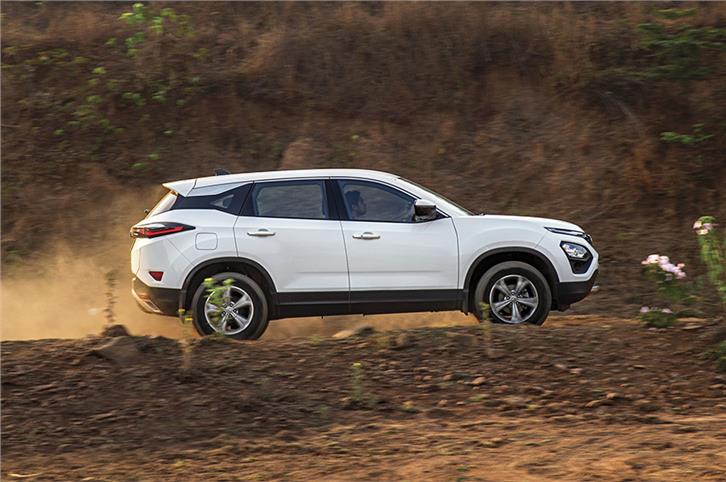
Suspension is a bit firm, but it tackles bad roads very competently.
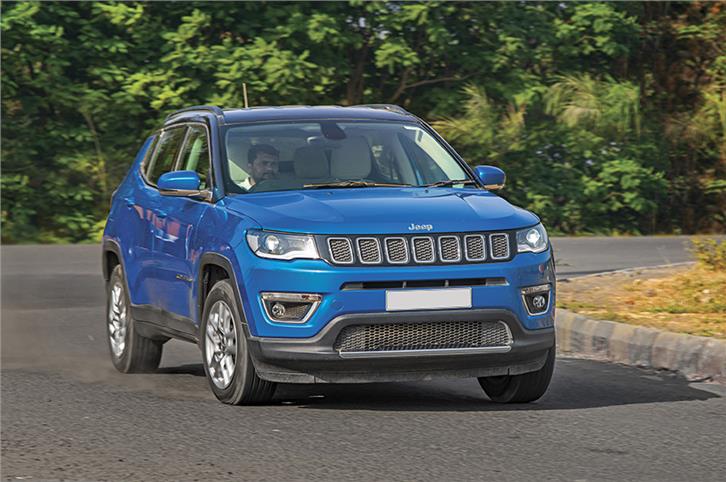
With a strong engine, precise steering and sorted dynamics, it is the best car to drive.
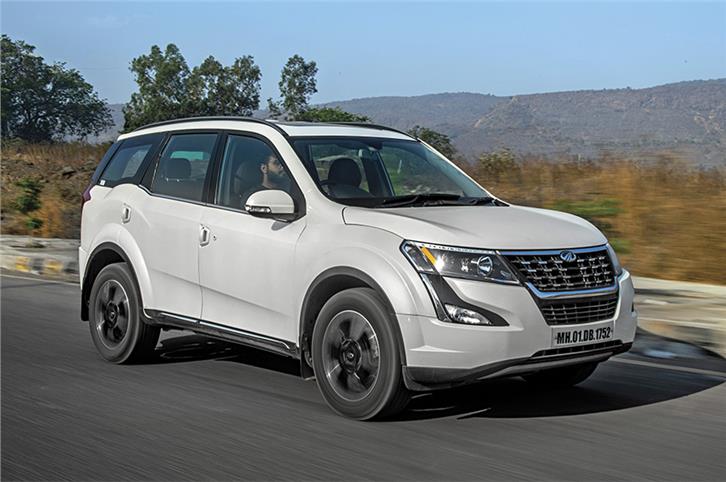
Strong engine makes the XUV500 a capable highway cruiser.
Few cars catch the fancy of Indian buyers as easily as SUVs do. Every brand seems to want to take advantage of this and, in fact, there have been so many new SUVs in the recent times that carmakers have to one-up the competition to make sure buyers are excited. Things that work well here are size, road presence, striking looks, equipment, value for money, and a bit of tech. Also, they seem to love it even more if it comes from an Indian carmaker. And that’s exactly what the Harrier is – an SUV developed by Tata Motors, based on a high-tech Land Rover-derived platform, which is massive in size, but priced a segment lower, and has striking looks to boot.
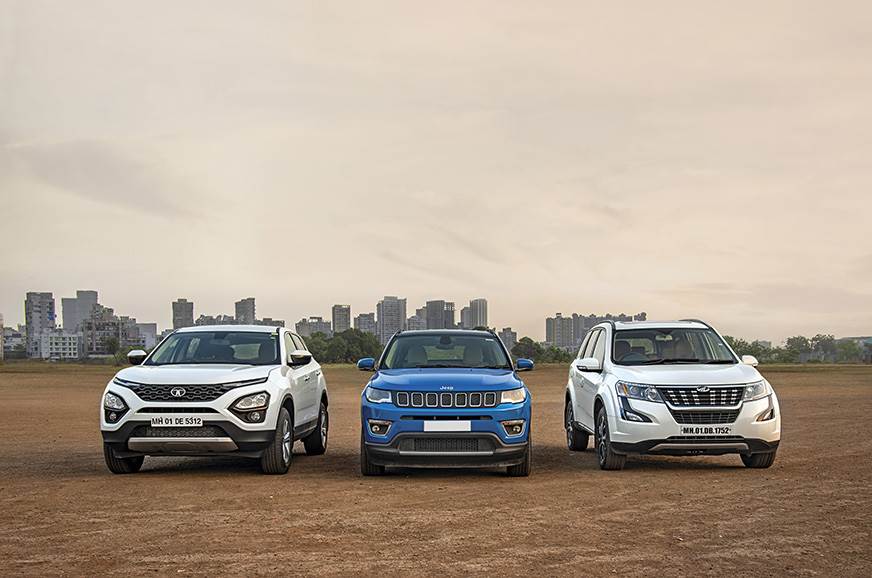
But the Harrier’s path to success won’t be as straightforward as that, as it has the formidable Jeep Compass to compete with. It’s a luxurious urban SUV with Jeep’s tough, go-anywhere DNA running through its fuel lines. The Compass jump-started the American brand’s sales in India, and it’s so good, it won our ‘Car of the Year’ title in 2018.
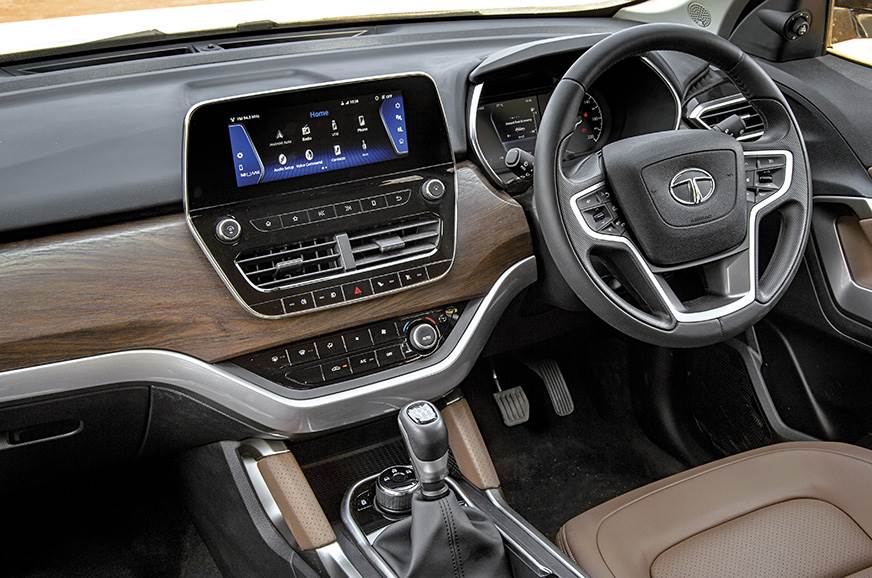
To make this comparison even more interesting, we’ve brought in the XUV500 to the fight. Another homegrown hero, the seven-seater from Mahindra was a game-changer back in the day, and it opened the brand up to a new set of buyers. The company has constantly updated it over the years, but what hasn’t changed is the bang for the buck it offers. Sure, its prices have almost doubled since the SUV’s launch back in 2011, but it remains the best-equipped seven-seater at its price point, and is still a steady seller for Mahindra.
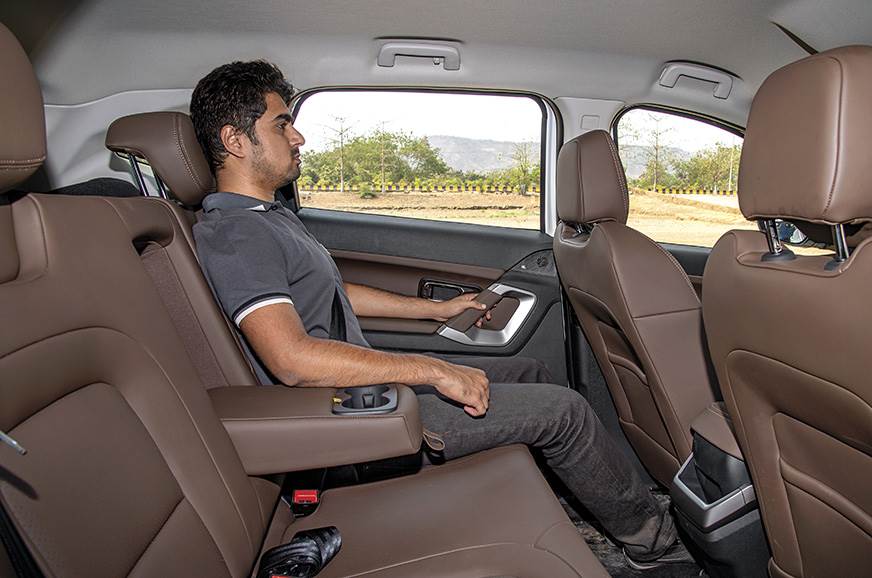
What’s interesting is that the Compass’ price range begins where the Harrier’s ends, and even the XUV500 is a bit more expensive than the Tata; so that’s one point already for the newest contender in this bunch. However, while this segment is still price conscious, image and prestige also influence buying decisions. So can the Tata manage to find acceptance while standing shoulder to shoulder with the very desirable Jeep? And should XUV500 loyalists and fans switch camps to the other Indian carmaker? We brought the three together to find out. And since the Harrier is only available as a 4x2 diesel-manual at the moment, the other two are in that configuration as well. However, since the top-spec Limited Plus variant of the Jeep is so much more expensive than the others, we’ve knocked it down one trim level – the Limited (O), which doesn’t feel all that stripped back.
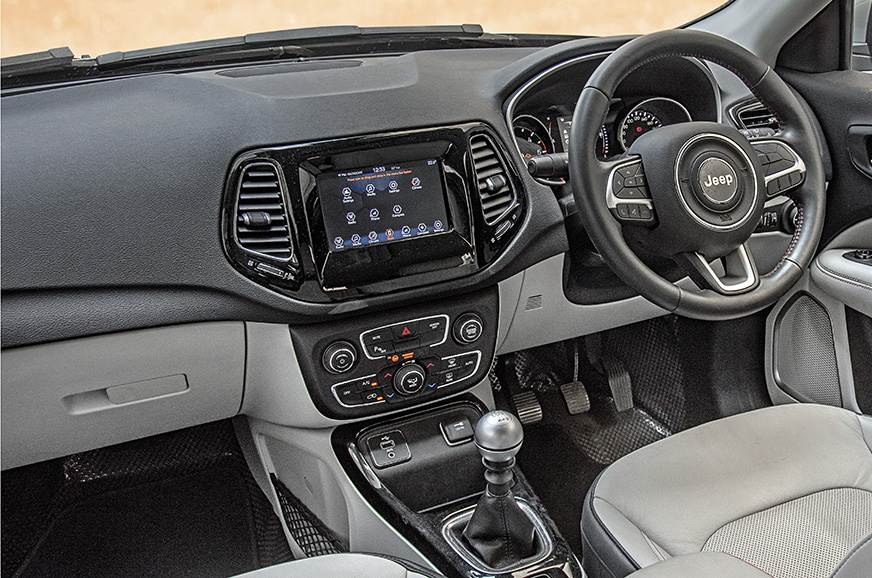
Numbers game
The Harrier uses the same Fiat-sourced 2.0-litre diesel engine as the Compass, but it has been detuned to 140hp (from the Compass’s 173hp); torque, however, is the same, at 350Nm. The Harrier is tuned for good driveability, and while there is some turbo lag, it’s not very pronounced. Even once the turbo starts spinning, power build-up is quite linear from 1,800rpm onwards, and the mid-range feels adequate enough to get ahead of traffic. The Harrier even has three driving modes – Sport, City and Eco – and performance is noticeably different across them, with Sport being the most responsive and athletic, and Eco being the dullest. Max revs are restricted in Eco and City modes, and using these in slow-moving traffic, the engine can feel a bit jerky. In Sport mode, however, the engine spins freely until 5,000rpm, and that jerky low-speed behaviour also vanishes. Engine refinement isn’t the Harrier’s strength though, and it feels a bit louder than the Compass at idle, although both sound equally boomy on the move. You will also feel some vibrations filtering through the Harrier’s steering and clutch at idle.
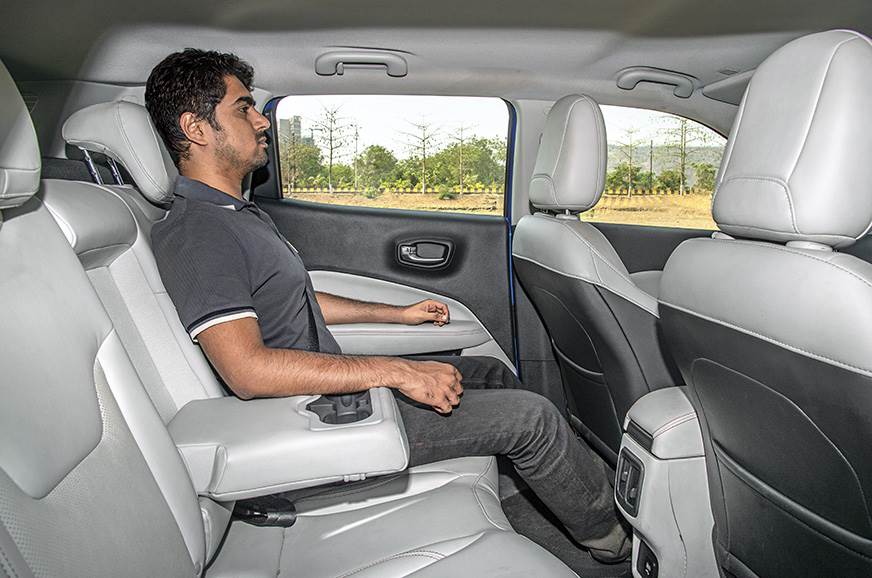
The Compass makes the most power, at 173hp, and the performance numbers confirm this – it accelerates the fastest from 0-100kph, and even in-gear acceleration in the first four gears is the quickest. This engine feels very driveable and starts building speed nicely from as low as 1,500rpm. Its mid-range and top-end are particularly strong and punchy, making the SUV a delight to drive. And what adds to the experience is the precise 6-speed gearbox that feels slick and positive. The clutch, however, is the heaviest to use. The engine delivers a hefty wave of torque beyond 2,000rpm and it feels the strongest at mid and high revs. Both, the Harrier and Compass feel well insulated and cut passengers off from what’s going on outside.
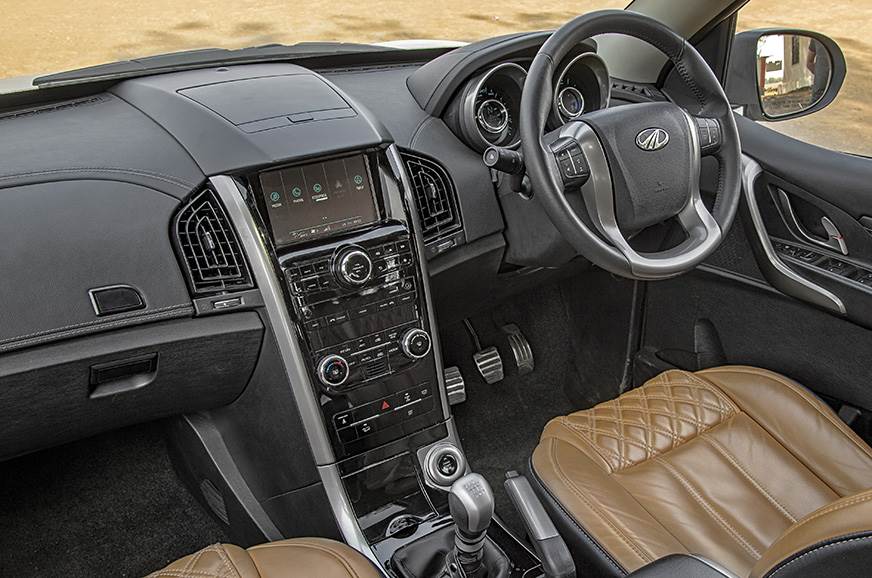
The Mahindra has the largest engine at 2,179cc, and it produces 155hp and 360Nm of torque. What’s impressive is just how well the turbo lag is masked – it feels the most responsive from the word go. The front wheels, however, struggle to put the power down under hard acceleration, and torque steer is the most dramatic here. Its 5th and 6th gear ratios are also closely stacked and rather short; so the engine tends to spin at quite high revs while cruising on the highway. And, while that’s good to make quick overtakes without a need to downshift, it can get quite noisy. And on that topic, the XUV500 scores poorly when it comes to cabin insulation; it’s below par for a nearly Rs 20 lakh car, with various extraneous noises filtering through at all times.
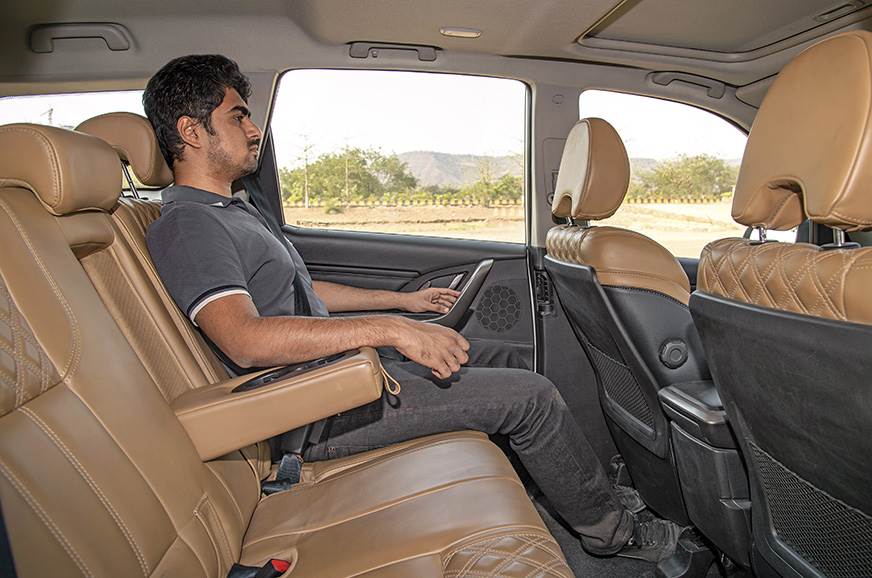
| Powertrain and performance | |||
|---|---|---|---|
| Tata Harrier | Jeep Compass | Mahindra XUV500 | |
| Engine | 4cyl, 1956cc, turbo-diesel | 4cyl, 1956cc, turbo-diesel | 4cyl, 2179cc, turbo-diesel |
| Power | 140hp at 3750rpm | 173hp at 3750rpm | 155hp at 3750rpm |
| Torque | 350Nm at 1750-2500rpm | 350Nm at 1750-2500rpm | 360Nm at 1750-2800rpm |
| Gearbox | 6-speed Manual | 6-speed Manual | 6-speed Manual |
| 0-20kph | 1.43s | 1.45s | 1.39s |
| 0-40kph | 3.34s | 3.00s | 2.99s |
| 0-60kph | 5.27s | 4.66s | 5.13s |
| 0-80kph | 8.43s | 7.21s | 8.11s |
| 0-100kph | 12.24s | 9.97s | 11.38s |
| 0-120kph | 17.64s | 14.19s | 16.30s |
| 0-140kph | 25.48s | 19.21s | 23.76s |
| 20-80kph (in 3rd gear) | 10.32s | 9.37s | 10.65s |
| 40-100kph (in 4th gear) | 11.31s | 10.26s | 11.56s |
| Noise level at idle | 47.0dB | 49.0dB | 52.3dB |
| Noise level at 50kph | 63.3dB | 60.4dB | 65.4dB |
| Noise level at 80kph | 64.6dB | 64.2dB | 68.3dB |
Controlling rights
The Tata feels like a hardy SUV in the way it tackles rough roads, with the suspension firmly set up, especially at the rear. So, while it swallows up bad roads easily, with little road shock filtering through at the front, those seated at the rear are always aware of the surface they’re on, and get tossed from side to side a lot more. This likely has a bit to do with the simpler and less-expensive, non-independent torsion-beam rear suspension the Tata uses; the other two have multi-link, independent rear suspension. Vertical movements, however, aren’t excessive, and what’s nice is that the Harrier feels sure-footed around corners, and body roll is well controlled for such a tall car. It isn’t engaging to drive, as the steering feels a bit vague around the straight-ahead position and it’s a bit heavy at parking speeds too. The XUV500’s steering, however, is a weak point in a car that simple lacks the dynamic capabilities of the others.
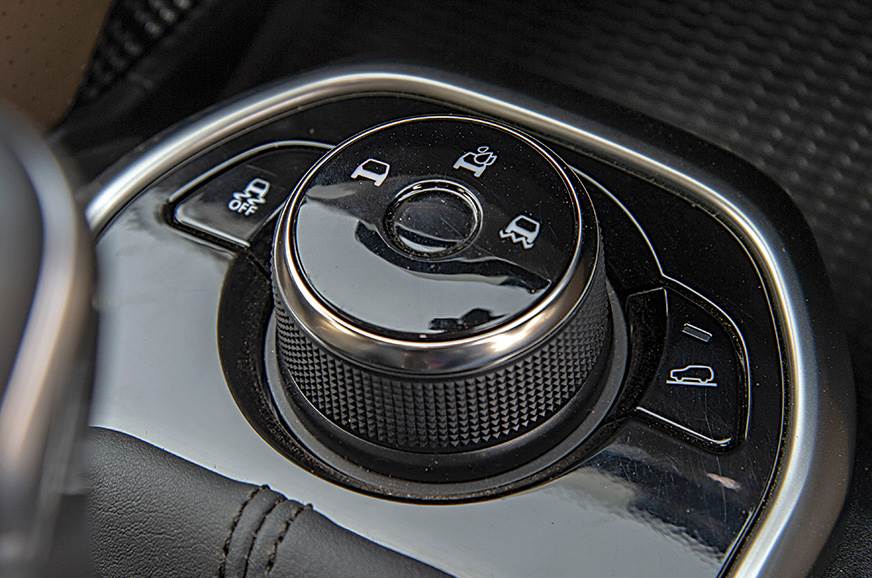
The Jeep Compass’ superb ride and handling balance easily makes it the nicest from behind the wheel. Yes, it’s a bit firm at low speeds, but the faster you go, the flatter it gets. Body movements are minimal, and the car remains composed and planted to the road. What’s even more impressive is just how sharp the Compass feels around corners, and its steering feels direct, consistent and inspires great confidence to push harder and harder.
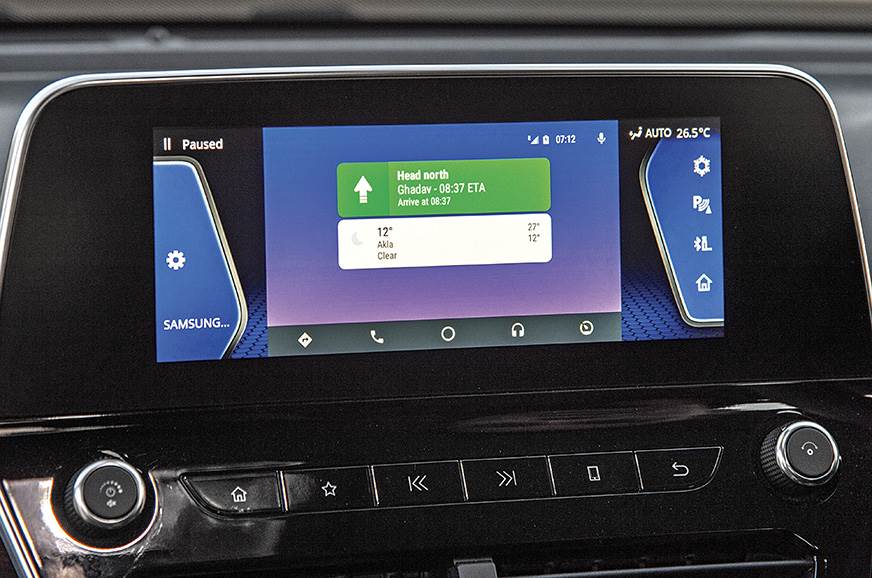
In comparison, the Mahindra’s suspension makes the most noise over bad roads, and while it doesn’t toss passengers side-to-side like the Tata, it crashes over bad roads and feels a bit jittery. Over undulations or wavy surfaces, there’s a fair bit of vertical movement and it doesn’t feel as composed as the other two at high speeds. For all its straight-line performance, the XUV500’s chassis isn’t as taut or agile as the others around corners; body roll is excessive, and the steering feels disconnected from the front wheels, offering absolutely no feel apart from some kickback mid-corner.
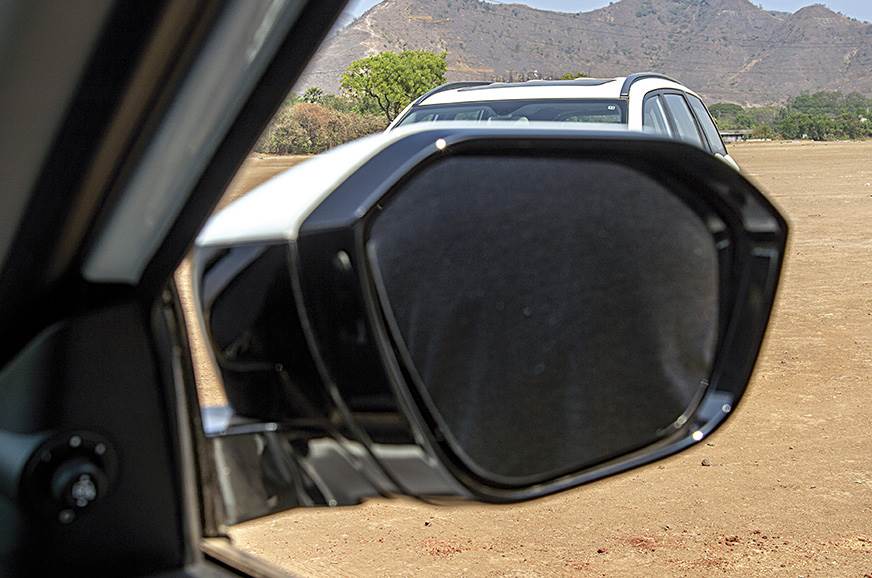
Full house
If you didn’t look at the badge, you’d easily mistake the Harrier’s interiors for one that’s from a more expensive SUV from a German marque. The design is clean and tasteful, with a nice mix of fake wood and piano black, and Tata has taken a huge step forward when it comes to quality of materials and fit-and-finish, although a few bits, like the steering wheel and a few plastics lower down in the cabin, don’t feel well-finished enough. You get that ‘big car’ feel due to the sheer amount of space on the inside. From behind the wheel, though, it can be a bit daunting, due to the high bonnet, huge pillars (front and rear) and the massive wing mirrors, which severely impact visibility. And while the gear lever is positioned within reach, it isn’t smooth to slot like the one on the Compass. What’s nice though are the front seats – they are very broad and offer good shoulder support. Storage areas are nicely laid out and the armrest even has a cooled bin underneath it. It’s not all perfect, though. The USB ports are hidden out of sight and the funky aircraft throttle-style handbrake is fiddly and takes some effort to use. At the rear, there’s acres of space on offer; in fact, it has the most legroom of the lot. The seat base is long, so thigh support is good, and due to its width, it can even seat three easily.
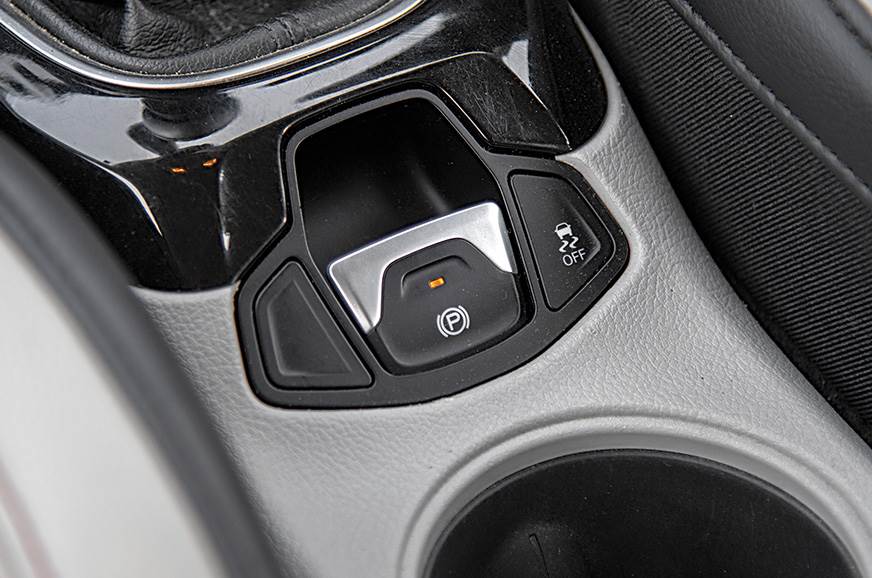
The quality of materials in the Jeep’s interior is top-notch, and everything is solidly put together with a built-to-last feel; even the doors shut with a more solid thud. It offers the best driving position, thanks to a wide array of steering adjustment and great all-round visibility. Storage areas aren’t as generous in here, though, and though it gets the basic feel-good stuff, this Limited (O) variant feels a bit lacking, considering its price. Its rear seat isn’t too comfortable either as the seat squab is a bit short, the cushioning very firm, and the back rest upright. Moreover, this seat isn’t wide enough to accommodate three adults comfortably.
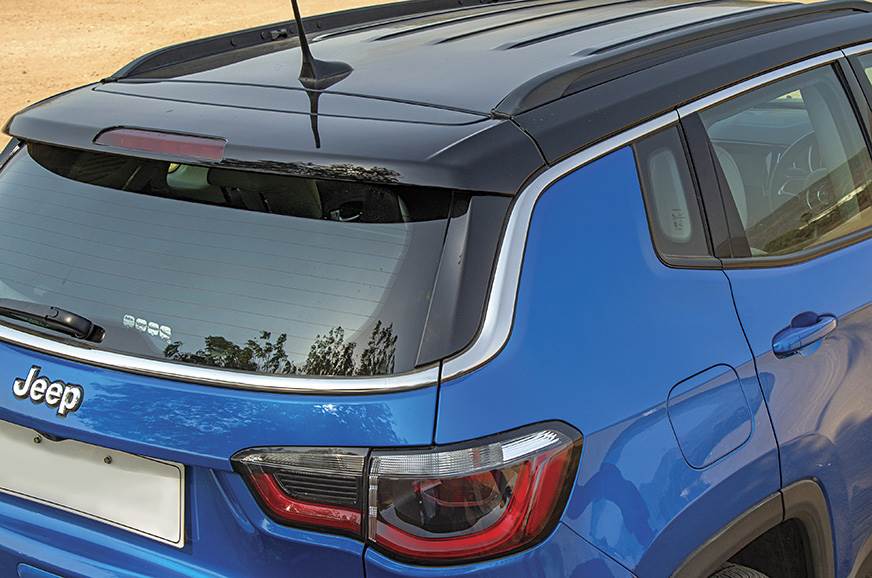
Step into the XUV500 after these and it feels like it’s from a different era altogether. While the plethora of buttons and the blue dials seemed revolutionary back in the day, they just look too dated now. And while Mahindra has upped the luxury quotient to an extent by providing ◊ ∆ soft-touch materials and leather upholstery, fit-finish and quality of materials leave a lot to be desired. The driver’s seat is electrically adjustable, which is nice, but the steering’s tilt range is limited, so you can’t get completely comfortable here. The seating is, however, the most upright and the driving position is the most commanding of the three. Even the middle row is placed significantly higher than the front row, so passengers seated at the back get a nice view of the road ahead, and outside. This seat offers plenty of room and is the widest of the lot, and thanks to the flat floor, three passengers will be most comfortable in the XUV’s middle row. Its backrest can even recline for more comfort. A huge advantage the XUV500 has, of course, is its ability to turn its luggage area into a third row of seats. Space in the last row is limited and you sit very low, but fitting in two more passengers isn’t even an option in the other two cars. There are even dedicated blower settings back here. And, if you don’t use the last row, you get 702 litres of luggage room, much more than the Compass (438 litres) and the Harrier (425 litres).

| Dimensions | |||
|---|---|---|---|
| Tata Harrier | Jeep Compass | Mahindra XUV500 | |
| Length | 4598mm | 4395mm | 4585mm |
| Width | 1894mm | 1818mm | 1890mm |
| Height | 1704mm | 1640mm | 1785mm |
| Wheelbase | 2741mm | 2636mm | 2700mm |
| Boot space | 425 litres | 438 litres | 702 litres (last row folded) |
Blackjack
On the surface, the Mahindra XUV500 has everything SUV buyers are looking for – a strong engine, the ability to carry seven, and premium features like a sunroof, 18-inch alloys and more. Buyers will also like the high seating position and the spacious second row. But the XUV also has dated interiors, poor fit and finish, and insufficient cabin insulation, none of which are befitting a car at this price. What’s more, this Mahindra is neither very comfortable to ride in, nor is it nice to drive.
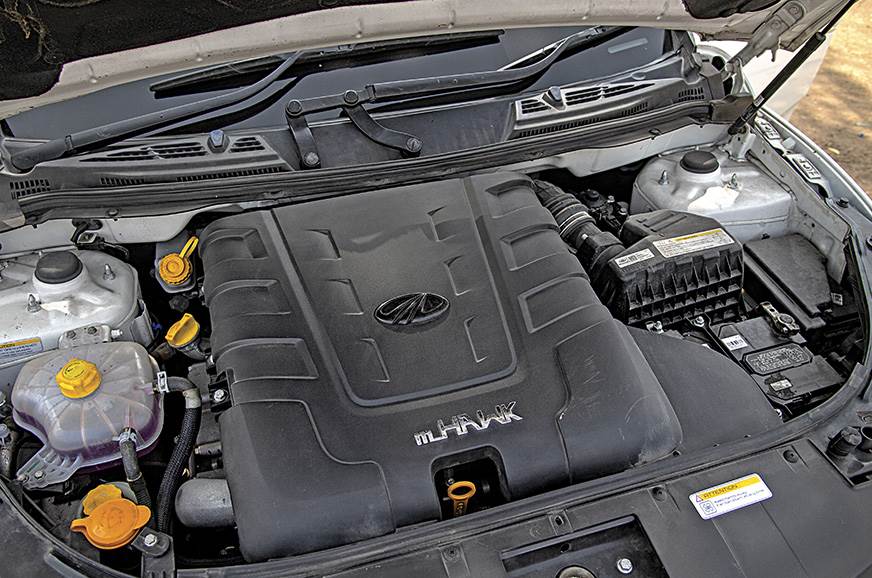
The Jeep Compass is one tough SUV, and it’s got its fundamentals so right, it’s hard to fault. It’s got a superb ride and handling balance and it is easily the most enjoyable of the three to drive. It also has an air of desirability, and its solid, high-quality interiors are very inviting. It does have a few shortcomings, though – like a back seat that isn’t the most spacious or comfortable, and you really feel like you aren’t getting enough equipment for your money. And then there’s the money itself; even though this isn’t the top-spec car, it’s still a whopping Rs 4 lakh more expensive than the Harrier.
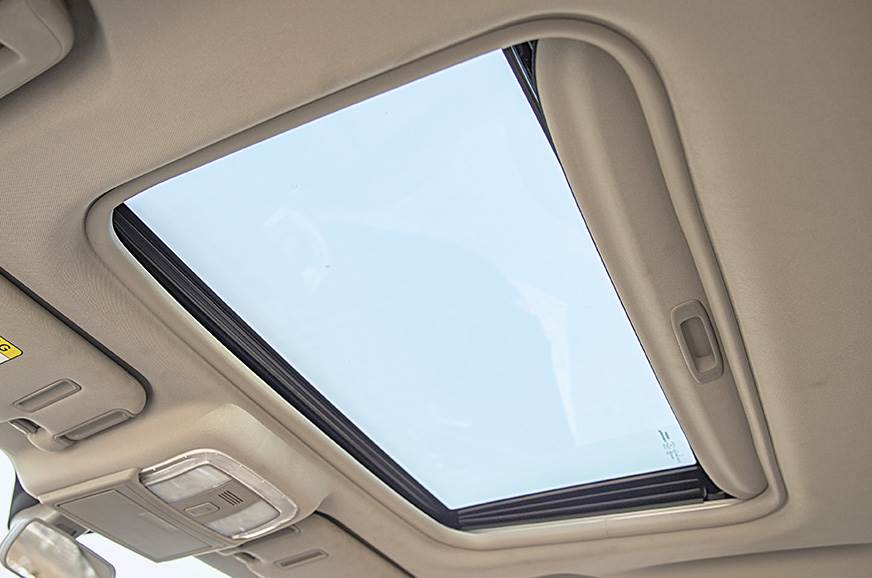
Being the largest, yet most affordable car here makes the Tata Harrier a formidable package. And it’s not just the real estate you get for your money, but a combination of snazzy exteriors, strong road presence, and well-appointed, spacious interiors which seal the deal. Despite being the least powerful, its engine is very driveable and easy to live with. The Tata, however, doesn’t get an automatic option, misses features the XUV500 offers, and a small yet significant point is that its oversized mirrors can prove hazardous on our streets. Nevertheless, there’s no contesting its value proposition and the premium feel that it delivers for the money. It makes you question the need to stretch your budget for either of the other two, and it is for this reason, it walks away victorious.
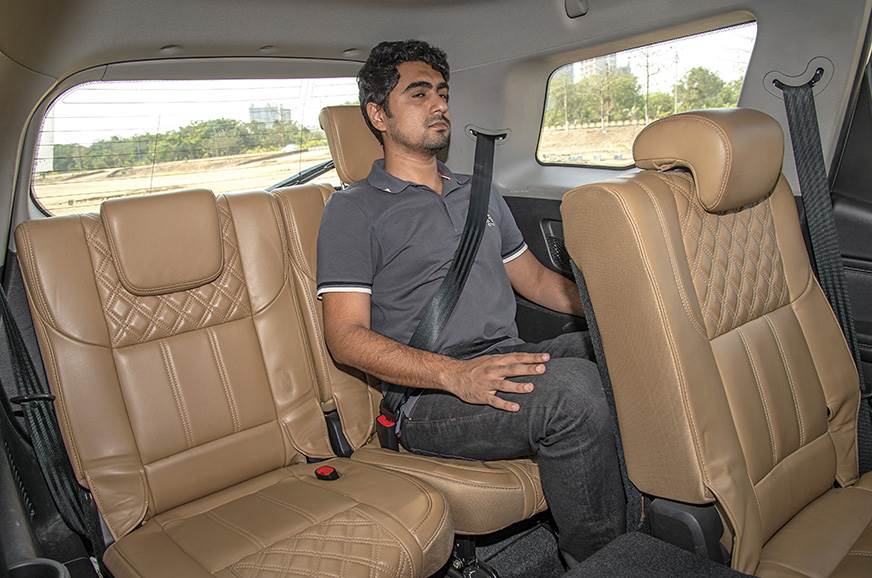
| Features | |||
|---|---|---|---|
| Tata Harrier | Jeep Compass | Mahindra XUV500 | |
| Projector headlamps | Xenon | Bi-Xenon | Halogen |
| Auto headlights/wipers | Yes | NA | Yes |
| Sunroof | NA | NA | Yes |
| Leather seats | Yes | Yes | Yes |
| Powered driver's seat | NA | NA | Yes |
| Apple CarPlay/Android Auto | Yes | Yes | Android Auto only |
| Cooled seats | NA | NA | NA |
| Parking camera | Yes | Yes | Yes |
| Climate control | Yes | Dual-zone | Yes |
| Wireless charging | NA | NA | NA |
| Tyre pressure monitor | NA | NA | Yes |
| Cruise control | Yes | NA | Yes |
| All-wheel disc brakes | NA | Yes | Yes |
| Hill-launch assist | Yes | Yes | Yes |
| ESP | Yes | Yes | Yes |
| Airbags | 6 | 2 | 6 |
| Price (ex-showroom, Delhi) | Rs 16.25 lakh | Rs 20.21 lakh | Rs 17.18 lakh |
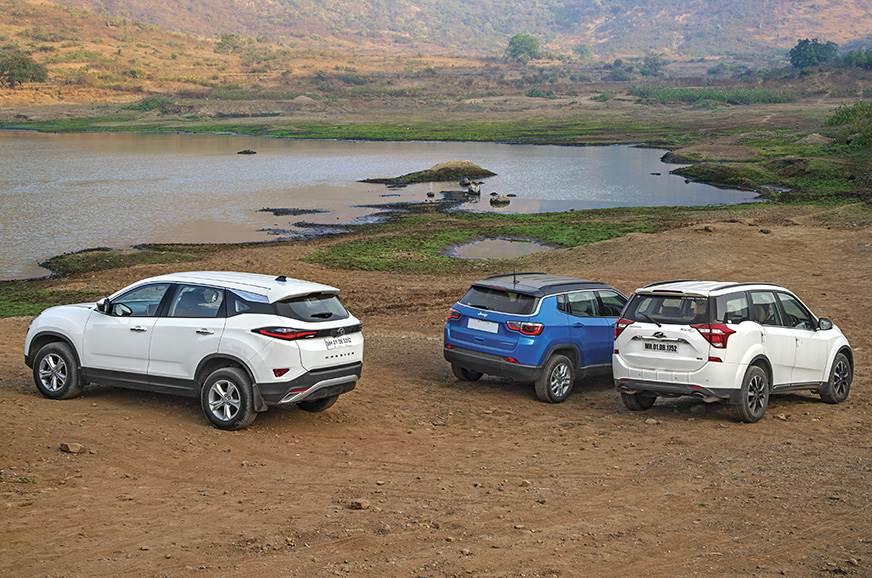
Copyright (c) Autocar India. All rights reserved.

Maruti Suzuki plans to use the Boosterjet engine in more models. Which one would you like to see it in?
Comments
Member Login
Personal Details
No comments yet. Be the first to comment.